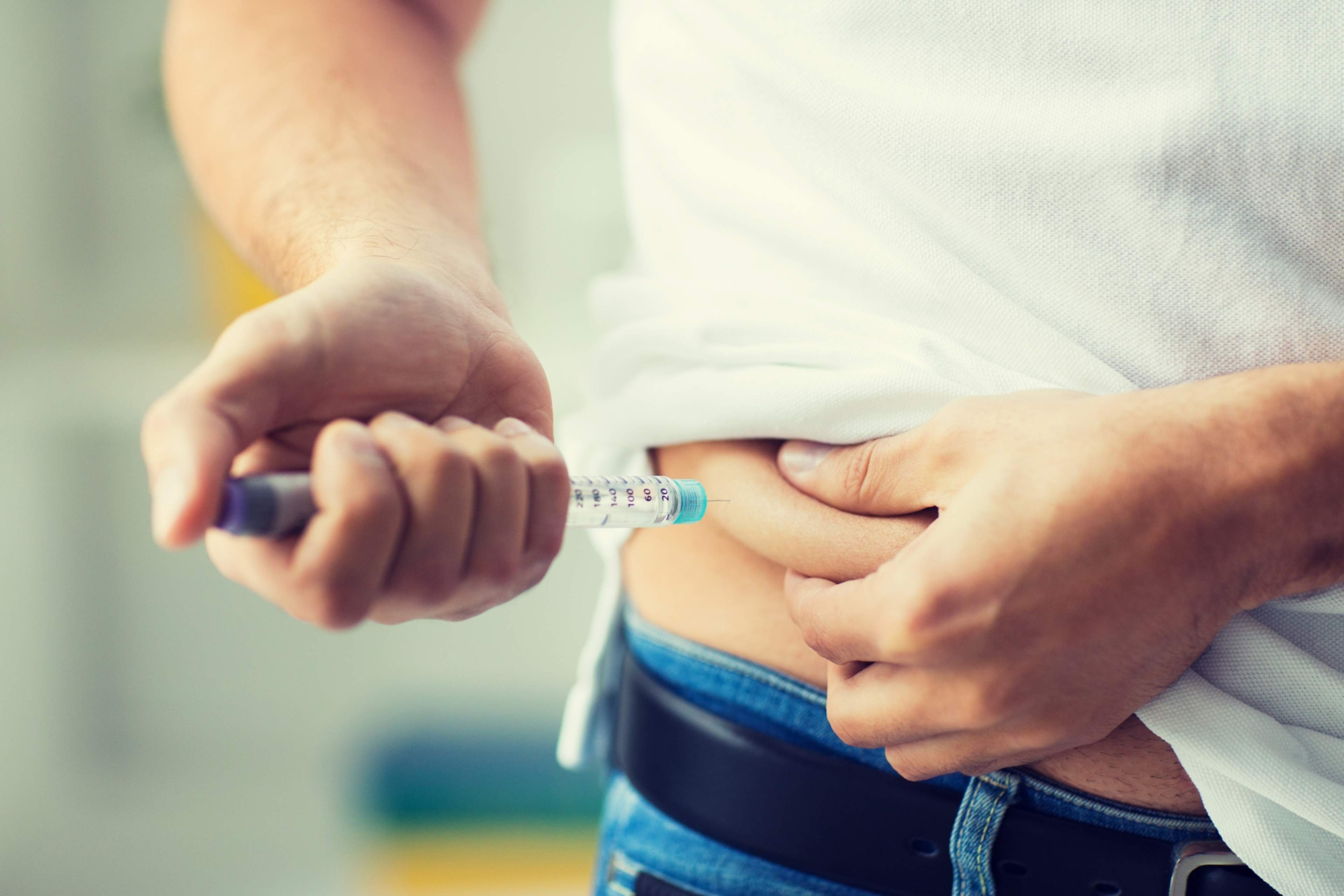In the beginning, you can practice the right injection technique with your nurse. The aim is that going forward, you should be able to inject on your own.
Injecting insulins
Normally, the handy insulin pens make it technically easy to inject insulin.

Perform a visual inspection of the insulin product. Clear insulin should show no signs of opacity, flakes or blood. Check the use-by date and make sure that there is no air in the cartridge and that the pen is undamaged. Clear insulin doesn’t need to be mixed before it is injected. An opaque insulin product is mixed at room temperature by carefully turning the pen at least ten times until the colour is even.

Use a new needle each time you inject to avoid tissue damage and pain when injecting. Hold the needle perpendicular to the pen when attaching it. Remove both needle covers. Most insulin pen manufacturers recommend testing with at least 2 units, but it's a good idea to check the user manual for the recommended unit amount for your own injection device. Change the needle if a drop does not form after repeating the specified unit amount as per the instructions.
While checking the insulin flow, you can remove any air bubbles by holding the pen upright when pressing the plunger. If no insulin appears at the tip of the needle, even after you have removed air from the syringe and/or replaced the needle, replace the pen.

Select the desired insulin dose on the pen by turning the selector at the end of the pen. You can check the set dose from the dosage window.

The injection site does not need to be cleaned unless you have been specifically instructed to do so. When choosing an injection site, also ensure that you take note of the sufficient wide use of the injection sites. Inject at least two finger-widths away from the previous injection site and preferably switch entirely, for example, from one side to the other in abdomen or the othe thigh, between injections. Do not inject insulin into scar tissue, a callus, mole or bruise. You should also avoid injecting into a tattooed area of the skin.

Gently pinch up your skin between your thumb and index finger. Usually the needle is pushed into the skinfold at a 90-degree angel. As an exception, if you are using a short 4 mm insulin pen needle, you can inject at a 90-degree angel without pinching your skin.
Slowly press the plunger all the way to the end and keep the needle still in place for 10 seconds. Let go of the skinfold and pull the needle out. You can press down on the injection site with your finger for a moment. As long as you injected slowly, it does not matter if there is a drop of insulin or blood on your skin.
Once the whole dose has been administered, the dose display resets to zero.
Finally, remove the needle from the pen and place it in the needle container. n empty soft drink bottle, for example, can be used as a needle container. Store the insulin pen always without a needle attached. If you do not remove the needle, insulin may seep out of the needle and block it. Air may also enter the insulin pen via the needle.
Updated 13.10.2023

